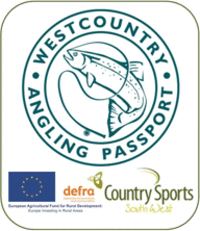The River's Neet and Strat, situated in Cornwall, originate from the agricultural lands of North Cornwall. They converge at Marhamchurch before flowing northwards, passing over Summerleaze Beach and finally reaching the sea. Although these rivers may be relatively small in size, they play a crucial role in providing essential habitats for various fish species, including Trout, Lamprey, and Eels. This camera was installed and is maintained by the Environment Agency and can be viewed
here. All content is available under the
Open Government Licence v3.0. Bude, an English seaside town located in northeast Cornwall, lies at the mouth of the River Neet (also known locally as the River Strat). It was formerly referred to as Bude Haven. Positioned southwest of Stratton, south of Flexbury and Poughill, and north of Widemouth Bay, Bude is accessible via the A3073 road off the A39. The town of Bude is twinned with Ergué-Gabéric in Brittany, France. Overlooking Bude Bay in the Celtic Sea, a part of the Atlantic Ocean, the coastal area of Bude offers a picturesque setting. The population of the civil parish can be found under Bude-Stratton.Bude boasts a vibrant local community renowned for its environmental focus, and it is home to various green initiatives, including the Two Minute Foundation initiated by writer, surfer, and activist Martin Dorey. Historically, Bude held significance as a harbor and a source of sea sand, which proved valuable for enhancing soil conditions inland. The transportation of this sand was facilitated by the Bude Canal. During the Victorian era, Bude gained popularity as a seaside resort and emerged as a favored destination in the 20th century with the introduction of new railway connections.Bradshaw's Guide of 1866, Section 2, characterizes Bude as "a small port and picturesque village in the north-eastern extremity of Cornwall." It highlights the town's status as an esteemed marine resort with excellent amenities for bathers. The harbor bed comprises fine, bright yellow sand adorned with small shells. The guide further describes Bude's coastal scenery as remarkable, featuring majestic and rugged cliffs rising on all sides. It also portrays Bude as an idyllic and romantic retreat.



